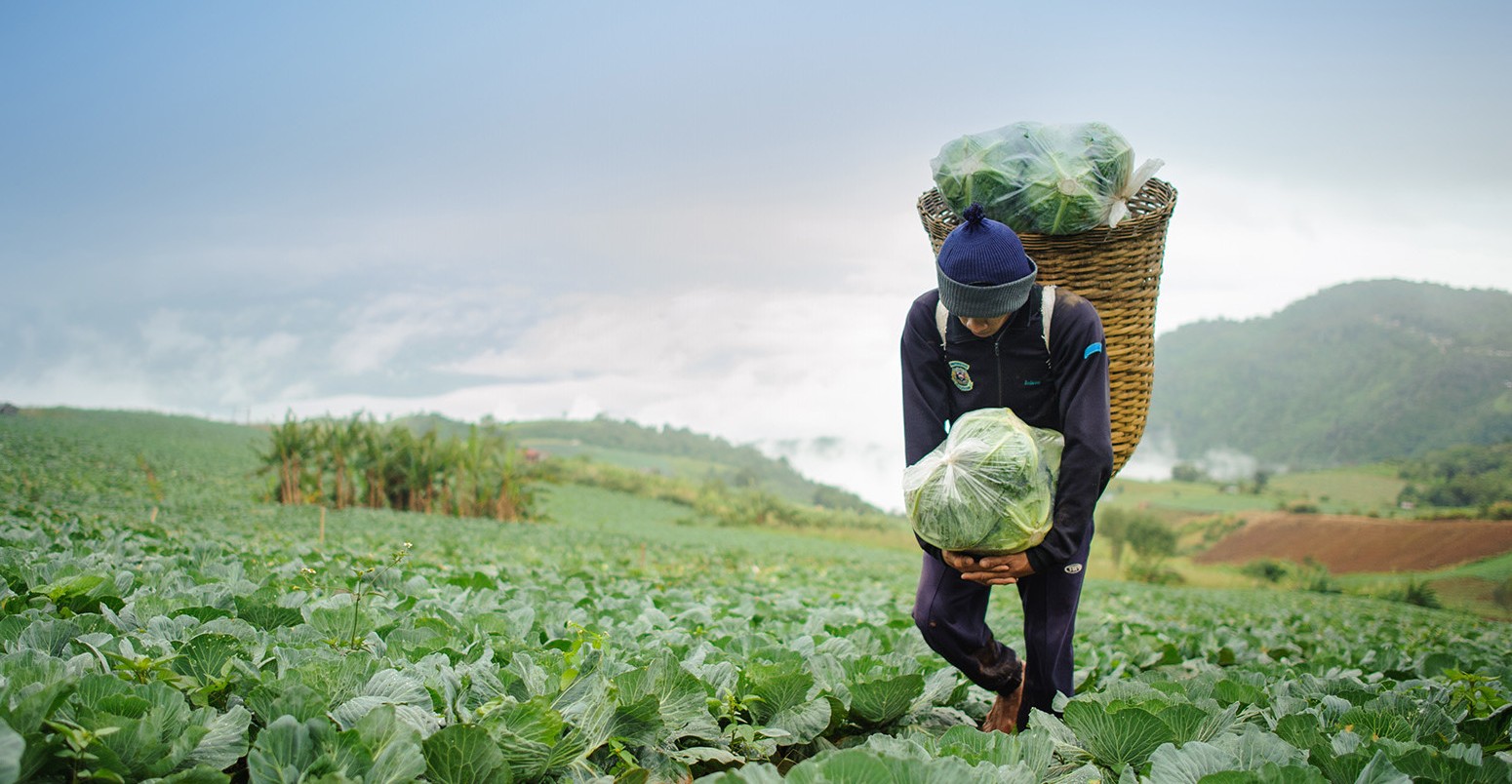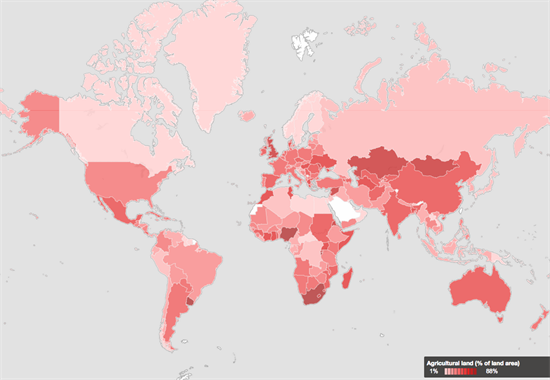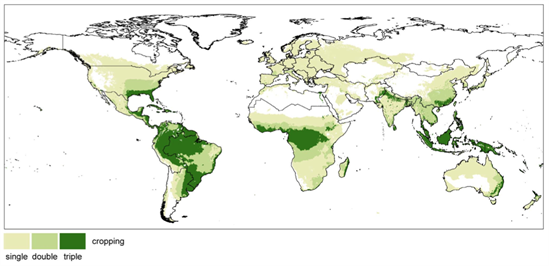
An uncertain future for global farming under climate change, study shows
Robert McSweeney
09.17.14Robert McSweeney
17.09.2014 | 8:01pmClimate change is likely to cause an expansion of land suitable for growing crops globally, but on average the quality of land will decline, a new study shows.
A warmer world would mean more cropland for northern latitude countries such as China, Russia and Canada, but there are trade-offs elsewhere, with much of Africa having to manage with less cropland and fewer harvests per year.
Suitable cropland
Not everywhere in the world is suitable for growing crops. Some areas are too dry, or too cold, while other areas have poor quality soil or are too hilly. The climate plays a significant role in determining what we can grow and where.
At the moment, about 40 per cent of the Earth’s land is used for farming, though there are huge differences between countries. For example, over 60 per cent of India is used for agriculture, whereas the figure for Canada is much lower, at just seven per cent.
You can see in the map below how this varies across the world; the darker the red colour, the more land is used for farming.
Percentage of land used for agriculture in 2011. World Bank
A new study, just published in the journal PLOS ONE, analysed 23 regions around the world to determine their suitability for agriculture. By considering the present day and at the end of the century, the study looked at how this suitability might be affected by changes in climate.
High latitudes
Globally, the researchers found an increase in suitable cropland of 4.8 million square kilometers (sq km) under climate change.
The northern high latitudes would see most of the rise in usable farmland, as we see areas that are too cold for crops warm up through the century.
According to the research, Russia, Canada and China, would see increases of 3.1 million sq km, 2.1 million sq km, and 0.9 million sq km, respectively.
However, while the changing climate should, in theory, make more land suitable for farming, reaping the benefits is unlikely to be that straightforward, the study cautions.
New cropland would be in sparsely populated areas that wouldn’t necessarily have the labour and infrastructure in place to take full advantage, say the authors. So establishing farming in any of the new areas might require a lot of investment.
Declining quality
As well as changes in farmable area, the researchers found a decline in the overall quality of farmland worldwide. The study shows a reduction in the amount of the highest quality cropland by 0.7 million sq km. Dr Florian Zabel, lead author of the paper, tells us:
“Our results suggest that globally, there will be more area suitable for agriculture by the end of the century, while at the same time the average global suitability is worsening. This means that we will have fewer ‘highly suitable’ sites but more ‘marginally’ and ‘moderately suitable’ sites.”
In terms of food production, this means land management and farming practices, such as irrigation and choice of crop variety, will become increasingly important. Zabel adds:
“[E]ven a ‘marginally suitable’ site can be managed perfectly and thus be more productive or profitable than the ‘best suitable’ site if this is badly managed. In my opinion, it is an important (scientific) challenge to support farmers with best knowledge for management practices and technology in order to archive a more efficient and sustainable agriculture.”
Benefits in some parts of the world come with tradeoffs elsewhere. The study found climate change will reduce cropland in other parts of the world, shown by the yellow and brown areas in the map. The largest reduction is found in sub-Saharan Africa, at over 2 million sq km, but much of southern Europe, Australia, and the Middle East are also affected.
Multiple cropping
In some areas of the world, the growing season is long enough to grow two or three crops on the same land in a single year, known as ‘double-cropping’ or ‘triple-cropping’. The dark green areas in the map below show triple cropping mainly occurs in the tropics.
Map of suitable areas for single, double and triple cropping for present-day. Zabel et al. (2014)
Climate change has a huge impact on the areas suitable for multiple cropping, the study concludes.
Brazil and sub-Saharan Africa look set to be the worst-affected, losing 29 per cent (2.9 million sq km) and 20 per cent (1.7 million sq km) of triple-cropping land by the end of the century, respectively.
There are countries that could benefit, however. China, India, Japan, Middle East/North Africa, Russia and the USA could all become suitable for multiple cropping in the future. But these increases are vastly outweighed by the losses elsewhere, the authors note.
And these losses will be keenly felt in those parts of the world that are particularly vulnerable to climate impacts. Regions such as sub-Saharan Africa, which already has the highest proportion of people facing food insecurity of anywhere in the world.
Main image: Farmer in a cabbage field. Credit: Isamare/Shutterstock.com.
Zabel F, Putzenlechner B, Mauser W (2014) Global Agricultural Land Resources - A High Resolution Suitability Evaluation and Its Perspectives until 2100 under Climate Change Conditions. PLoS ONE 9(9): e107522. doi:10.1371/journal.pone.0107522



